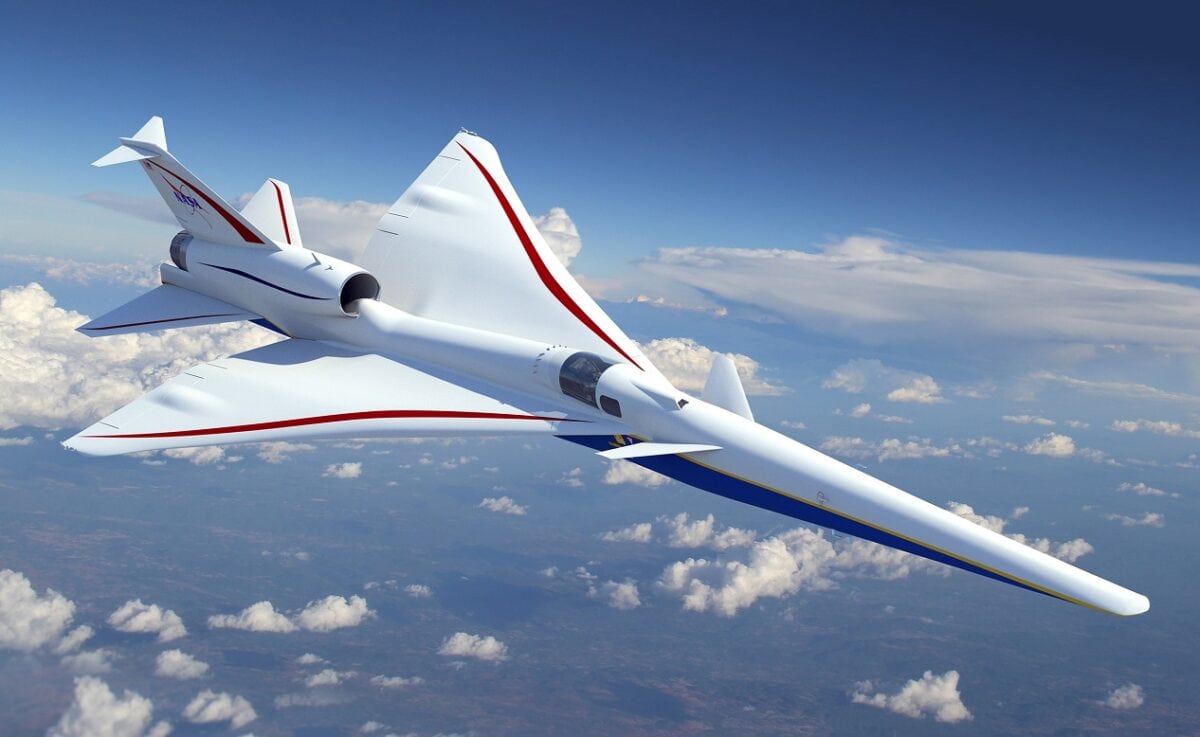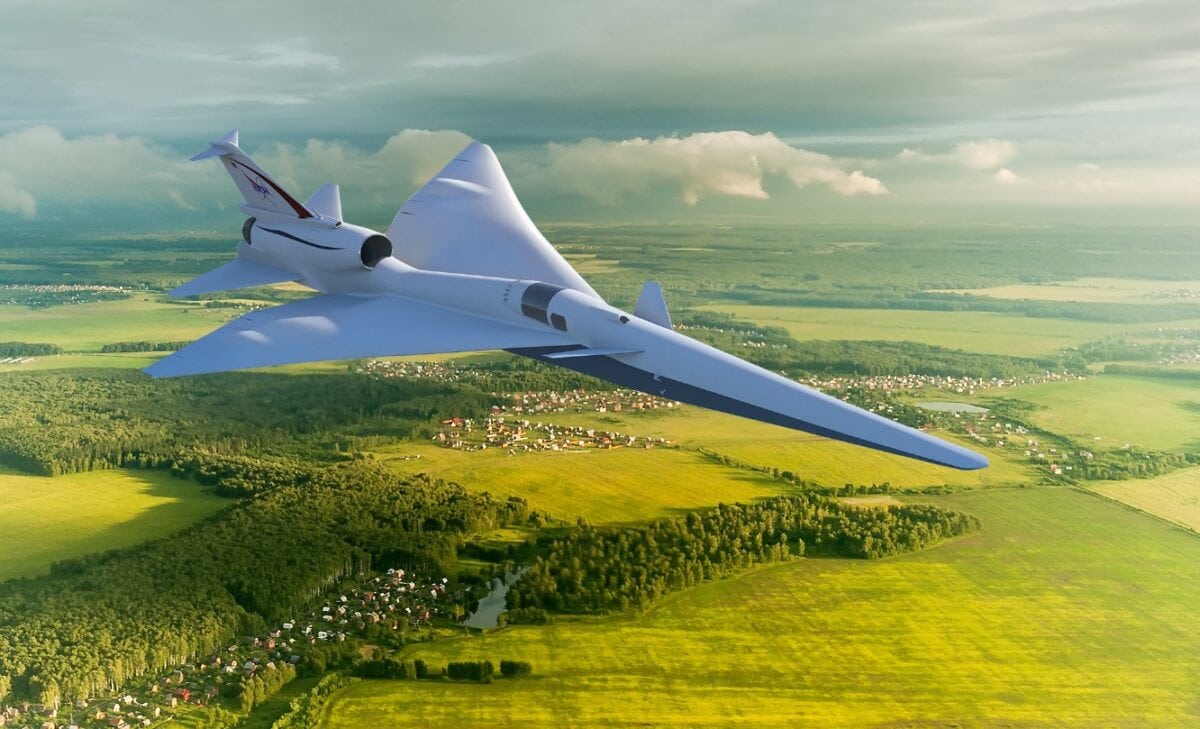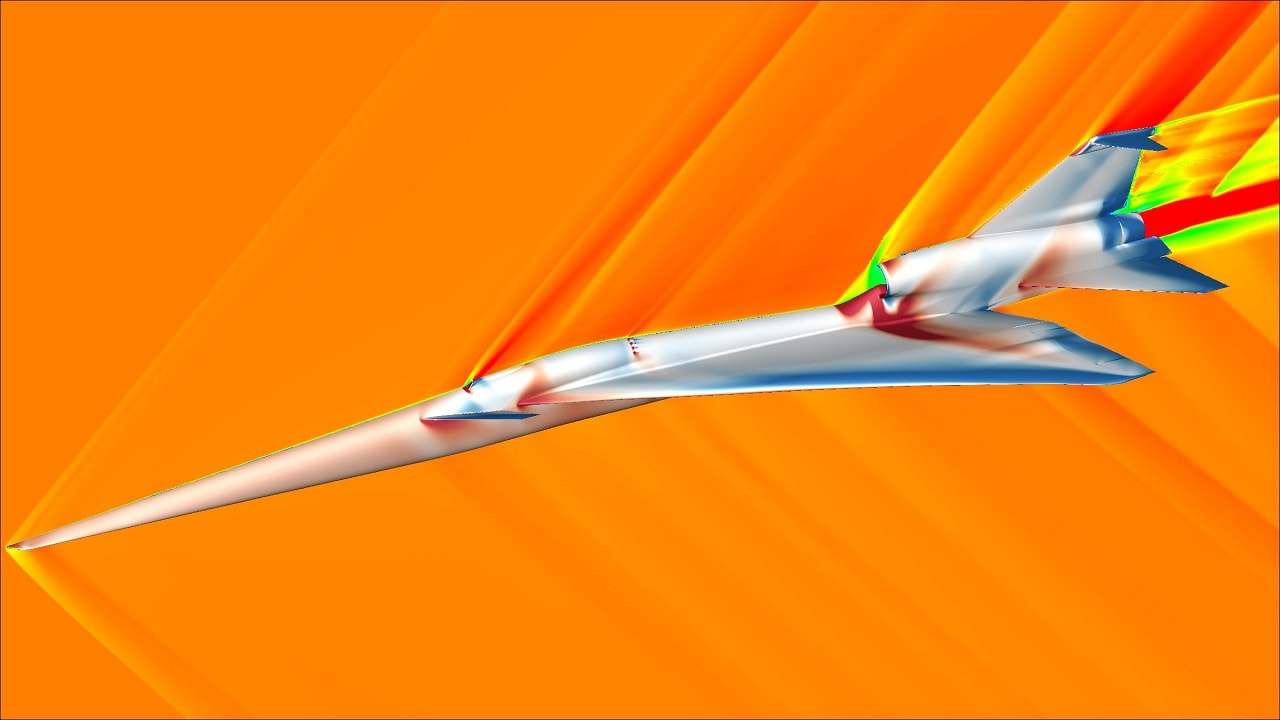Here comes the X-59: Supersonic transport may hold a promise of super-fast travel, but it also promises to be extremely loud – and not just to those on the actual aircraft. That is why the Concorde, which was developed as part of an Anglo-French effort and while operated by British Airways and Air France, was typically only used for travel from Europe to North America. The American SST (supersonic transport) effort was grounded mainly due to noise and environmental concerns.
Those concerns remain as multiple European nations and environmental groups seek to stop any comeback of supersonic commercial travel. Earlier this year, a panel of United Nations aviation experts even called for an update of the decades-old supersonic noise standard by 2025.
X-59 Meets Boom Boom Pow
At issue is the “sonic boom,” an explosion-long bang that is caused when a plane flies faster than the speed of sound. It can be startling to those on the ground, and it can even crack windows. The Concorde, which last flew in 2003, had been restricted to subsonic speeds when flying over land or near coastlines. Current international regulations still limit the speed of commercial transport over land to Mach 1, or the speed of sonic, as an effort to avoid the disturbance of the sonic booms over inhabited areas.
By the “sound” of it, such issues would ground any chance of a supersonic comeback – but Lockheed Martin is still exploring ways of developing a high-speed aircraft but without the boom, boom, pow! An effort, in collaboration with NASA’s Quesst mission and the Lockheed Martin Skunk Works, is now underway with the X-59.
In 2018, NASA awarded Lockheed Martin a $247.5 million contract to design, build and deliver late 2021 the Low-Boom X-plane. That aircraft will be used to collect community response data on the acceptability of a quiet sonic boom generated by the unique design of the aircraft.
“The data will help NASA provide regulators with the information needed to establish an acceptable commercial supersonic noise standard to lift the ban on commercial supersonic travel over land,” Lockheed Martin stated.
The program has already conducted ground tests at the defense giant’s Texas facility, as well as structural and fuel calibration tests. The April experiments were conducted to ensure the aircraft’s ability to withstand the loads and stresses of supersonic flight – or flight at speeds faster than Mach 1. During the tests, the X-59’s fuel systems were also calibrated and tested at Lockheed Martin’s Ft. Worth facilities. Since the airplane wasn’t actually flying, tests were conducted with the aircraft sitting on hydraulic jacks that are connected directly with the structure.
Silencing the Boom
It will be impossible to make the supersonic aircraft entirely silent, but instead, the developers see to reduce the boom into a “thump.” The X-59 is also the latest in a series of experimental aircraft that began with the X-1, which in 1947 became the first manned aircraft to exceed the speed of sound; as well as the X-15, which still maintains the record for fastest ever manned flight – set in 1967 at Mach 6.7.
Much like with the X-15, the devil is in the details – notably the sleek shape, which ensures the aircraft remains quieter when traveling at supersonic speeds.
The X-59 will continue to undergo tests on the ground, in anticipation of a first flight later in 2022.
“It will be significantly quieter than Concorde or any other supersonic aircraft that exist today,” Craig Nickol, senior adviser at NASA Headquarters, told CNN in July. “It’s extremely long and thin: It’s almost 100 feet long (30.5 meters), but has a wingspan of only about 29 feet. The nose is a distinguishing feature on this aircraft: it’s about a third of the length.”
Next Phases
After completing the first flight, the Quesst program will next on phase two, which is expected to begin next year. It will focus on acoustic validation – where the aircraft will ly over NASA’s Armstrong Flight Research Center in Edwards, California to demonstrate that the supersonic technologies work as designed. The flights will also show that the tools used to predict and measure the sound level of the sonic thump are ready for use in phase three.

Nasa Quiet Supersonic Technology Low-Boom Flight Demonstrator.

X-59
During phase three, the X-59 will then be flown over communities around the United States, and data will be gathered to determine how people on the ground feel about the sound. That is expected to take part from 2024 to 2026. NASA reportedly has yet to select which communities might get to “hear” if the aircraft is actually more of a thump than a boom.
The Quesst mission is currently set to wrap up in 2027 after taking the information collected during phase three and sharing it with U.S. and international regulators. From there, then it could be determined whether the development of future supersonic civilian aircraft is even possible.
Expert Biography: A Senior Editor for 1945, Peter Suciu is a Michigan-based writer who has contributed to more than four dozen magazines, newspapers, and websites with over 3,000 published pieces over a twenty-year career in journalism. He regularly writes about military hardware, firearms history, cybersecurity, and international affairs. Peter is also a Contributing Writer for Forbes. You can follow him on Twitter: @PeterSuciu.

